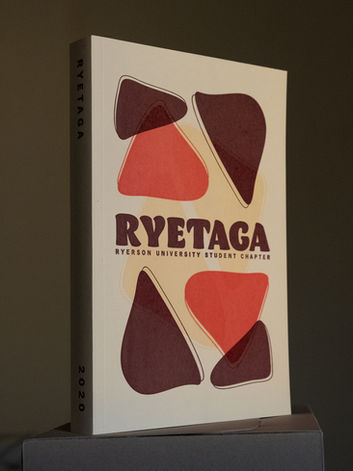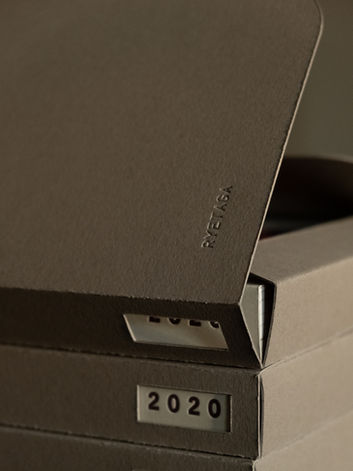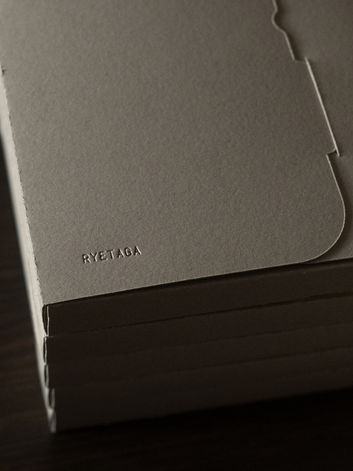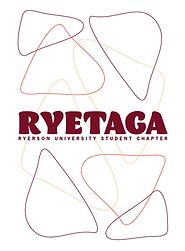top of page



RYERSON UNIVERSITY STUDENT CHAPTER



360-Degree Video
Production Montage
Check out our 360-degree videos to take a tour of our Heidelberg Centre, School of Graphic Communications Management.
Our stomping Grounds
Get the full 360-degree experience by watching on YouTube

pRODUCTION
RyeTAGA had the pleasure of working closely with Lowe Martin to print and bind our journal, and the packaging component was all done in-house.

Process
If there is an error upon loading, click view on YouTube.
Report Abstracts
Sustainability in
print & packaging
Annika Boyer | Samantha Chung | Lauren Henderson | Cara LoBrutto

Structure 3D Scan

This report provides an analysis and evaluation of Clif Bar’s primary and secondary packaging to determine the eco-friendliness of the existing package in order to propose a sustainable alternative. Methods of analysis include market accessibility and legal trends, Comparative Packaging Assessment (COMPASS), and cost and supply-chain considerations. Results of the data analyzed show that the existing primary Clif Bar package is not sustainable with much room for improvement and innovation. Although 100% of the paperboard packaging is recyclable, only 35% of the material used is post-consumer resin (PCR). Redesigning the transportation method by removing air travel reduces the carbon footprint by 80%. Further investigation revealed an improvement of using 62% less material by replacing the primary packaging made of aluminium and plastic with a biodegradable microfibrillated cellulose (MFC). Sustainable performance of the materials is very poor in both the existing primary and secondary packaging components.
Clif Bar is advertised and marketed to a segment of consumers who care for the environment. The report evaluates the range of sustainability within the product and concludes that it would be ideal to innovate and redesign various components of the package. This would satisfy the existing consumer demand as well as bring in new market segments.

Structure 3D Scan
Evaluating the
triple bottom line for smart packaging
Mila Khatri
The purpose of this thesis is to evaluate the benefits and challenges of smart packaging in three key areas: the people (consumers and brands), profits, and the planet. This thesis makes reference to the triple bottom line, which is used as a method of evaluating smart packaging. Results of the research and surveys conducted in this thesis conclude that smart packaging does not yet meet the triple bottom line, but it is well on its way to getting there. This is concluded based on the fact that only half of the consumers surveyed are willing to purchase smart packaging and see the benefits to paying more money for the technology. Others state that it is not worth the extra money. Smart packaging has the ability to provide brands with many benefits such as net revenue, brand loyalty, and brand awareness. However, the triple bottom line is not being met yet because there are challenges to implementing smart packaging such as high costs, and the fact that consumers must be willing to purchase smart packaging in order for brands to profit from it. Finally, smart packaging poses some challenges to the end-of-life phase such as the issue of recyclability. Smart packaging is a complex type of package, that results in higher recycling costs. If researched in-depth and appropriate materials are used, then smart packaging will pose less of an impact on recycling and sustainability.

The Sustainability
of Exapanded Gamut
Igor Grusecki

This thesis will examine the sustainability of expanded gamut printing. Expanded gamut is the practice of printing using seven colours to produce a high range of colours using a standardized ink set. This eliminates the need for a spot colour on press. However, is it sustainable to use more inks on press? Sustainability, as a term, has been expanded to include the social and economic impacts of an idea or innovation. Instead, sustainability is an examination of the economical, environmental, and social aspects. All of the aspects are equally important; if one fails, the rest fails, thus making the idea unsustainable. Something cannot be sustainable if it fails to be economically and socially conscious as well as environmentally sustainable. It was found that the use of expanded gamut printing is indeed sustainable in the print industry. Of course, there are shortfalls, but the benefits outweigh the costs. It is economically viable, more environmentally sustainable than traditional print, but the social aspect is a net neutral.

Structure 3D Scan
Principles of design in iphone app evolution
from 2008–2019
Melissa Wroe

Photoshop 3D Render
The purpose of this thesis is to research the principles of good and bad design by completing a subsequent review of the evolution of iPhone applications through the years 2008 until 2019. This thesis explores the principles of design while providing a subsequent review of the evolution of iPhone applications from the years they were invented until the present. The results of the surveys and research conducted show which design features and appearances are present in the most successful iPhone application versions. Through the use of surveys and the evaluation of the principles of good and bad design for each annual top rated application, it is clear that iPhone users tend to prefer the most recent version of iPhone applications due to their good design features and appearances.

How consumer age affects logo
Preference
Lital Chernyi

Structure 3D Scan

This thesis is exploring the evolution of six fast food company logos — McDonald’s, Burger King, KFC, Subway, Domino’s, and Pizza Hut — while comparing this to current logo trends and consumer preferences based on their age. Three age groups are measured: generation Z (18-24), generation Y (25-39), and generation X (40-53). In this study, 74 people are participating in a survey that is asking for their age and is questioning their opinion and preferences on the fast food companies’ logos, as well as on a non-existent company logo that was created for the purpose of this survey. The results of the survey are measured using the IBM SPSS statistical analysis tool and examine if the different variables had a significant statistical effect on other variables. The analysis of the survey shows that there is a significant difference between the age groups in their logo preference, specifically between generation Z and generation X. The results of this study proves that the younger age group tends to prefer simpler logos and logos that have sans-serif fonts, whereas the older age groups prefer more complex logo design and a larger variety of fonts.
Accessible PDF
Meet the Team

Faculty Advisor
Martin Habekost
RYETAGA
2019/20
Meet the Team

President
Julia Forrester

Loren Amaral
Vice President

Lauryn Marks
Creative Director

Production Director
Iain Ailles

Editorial Director
Samantha Nunziato

Afrah Idrees
Marketing & Events Director

Victoria Sallese
Multimedia Director

Corporate Relations
Carolyn Galganov
Contact Us

bottom of page










